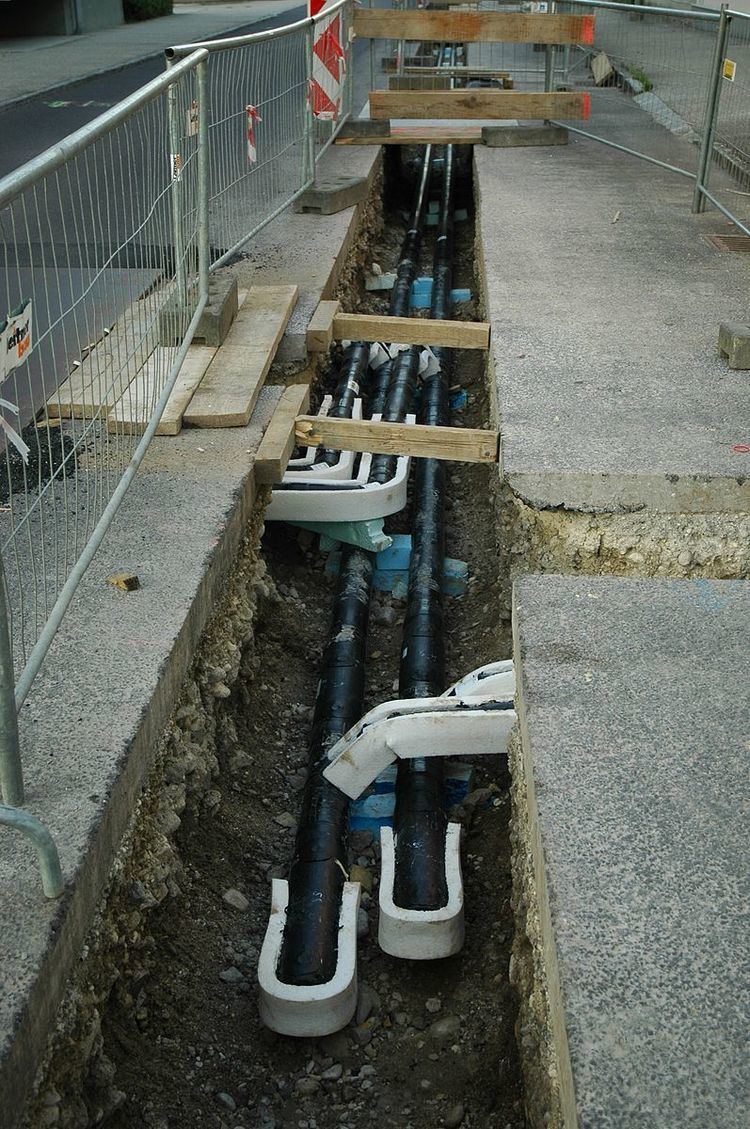 | ||
Insulated pipes (called also preinsulated pipes or bonded pipe ) are widely used for district heating and hot water supply in Europe. They consist of a steel pipe, an insulating layer, and an outer casing. The main purpose of such pipes is to maintain the temperature of the fluid in the pipes. A common application is the hot water from district heating plants. Most commonly used are single insulated pipes, but more recently in Europe it is becoming popular to use two pipes insulated within the same casing. By using insulated pipe supports, direct heat transfer between pipes and their supports are prevented.
The insulating material usually used is polyurethane foam or similar, with a coefficient of thermal conductivity k=0.033-0.024 W/mK (thermal conductivity). Outer casing is usually high-density polyethylene (HDPE). Production of preinsulated pipes for district heating in the European Union is regulated by the standard EN253. According to EN253:2003, pipes must be produced to work at constant temperature of 130 °C (266 °F) for 30 years, keeping thermal conductivity less than or equal to 0.033 W/mK. There are three insulation thickness levels.
Insulated pipelines are usually assembled from pipes of 6 metres (20 ft), 12 metres (39 ft), or 16 metres (52 ft) in length, laid underground in depth 0.4–1.0 metre (1 ft 4 in–3 ft 3 in). Efficient working life of district heating pipelines networks is estimated at 25–30 years, after which they need to be replaced with new pipes.
